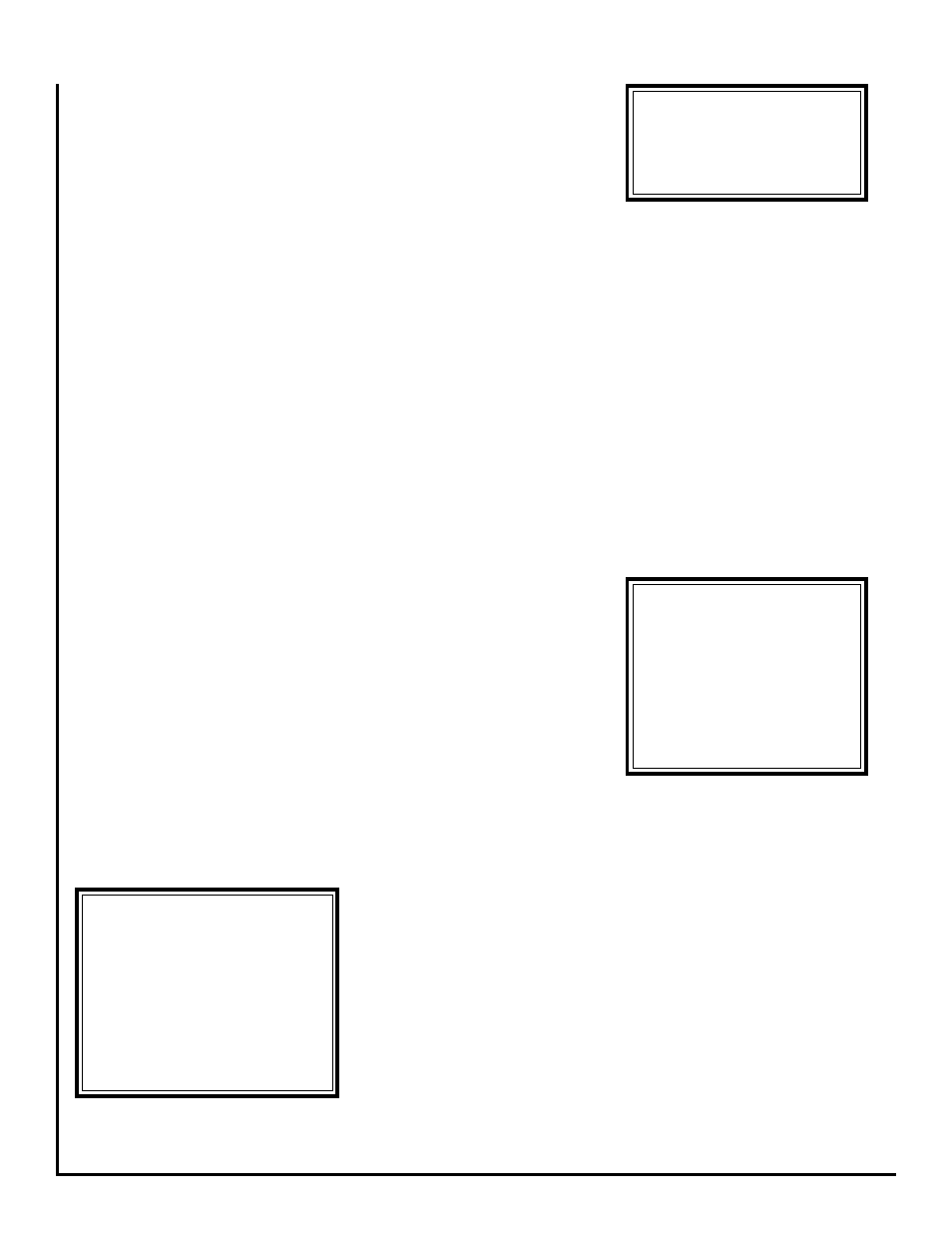First Co CLP-AQ (Less Than 30 Tall) User Manual
Page 2

followed for typical installations.
• Always use proper tools and equip-
ment.
• No wiring or other work should be
attempted without first ensuring that
the fan coil is completely discon-
nected from the power source and
locked out. Always verify that a good
ground connection exists prior to en-
ergizing any power sources.
• Always review the nameplate on
each unit for proper voltage and con-
trol configurations. This information
is determined from the components
and wiring of the unit and may vary
from unit to unit.
• When soldering or brazing to the
unit, it is recommended to have a fire
extinguisher readily available. When
soldering close to the cabinet wall or
near heat labile components, heat
shields or wet rags are required to
prevent damage.
• When the fan coil unit is in opera-
tion components are rotating at high
speeds.
• Units must be installed level to
ensure proper drainage and opera-
tion.
• Check unit prior to operation to
ensure that the condensate water will
drain toward the drain connection. An
overflow drain or an auxiliary drain
pan under the fan coil may be required
as a back up to a clogged primary
drain.
• Be sure that the drain pan is free
from foreign material prior to start up.
• Check filter media installation to
ensure that it is installed correctly.
Use the directional arrows or other
information on the filter to determine
the proper flow direction.
• Ensure that the air distribution sys-
tem does not exceed the external
static rating of the unit.
The CLQ fan coil unit is supplied
with a direct expansion refrigerant
coil. The suction and liquid refrigerant
lines must be sized in accordance
with the outdoor unit manufacturer’s
recommendations.
Condensate drain lines must be
installed with adequate slope away
from the unit to assure positive drain-
age. Since the drain pan is located on
the suction side of the blower, a
negative pressure exists at the drain
pan and a minimum trap of 1-1/2
inches must be provided in the drain
line to assure proper drainage.
NOTE: If a Condensate Overflow
Shut-off Switch, that is designed to
be installed in the drain line, is used
in place of a secondary drain line, then
the cut-off switch should be located
in the primary drain line between the
fan coil unit and the P-trap.
HOT WATER COIL
PIPING PRECAUTIONS
• Flush all field piping prior to connec-
tion to remove all debris.
• Use wet cotton rags to cool valve
bodies when soldering.
• Open all valves (midway for hand
valves, manually open on motorized
valves) prior to soldering.
• When soldering to bronze or brass,
heat the piping while in the socket/
cup and begin introducing the solder
when the flux boils rapidly.
Avoid direct flame into the solder joint.
• Heat can only be applied to the cup
of the valve body for a minimal time
before damage occurs (even with the
use of wet rags.
• Avoid rapid quenching of solder
joints as this will produce joints of
inferior quality.
• Connect all piping per accepted
industry standards and observe all
regulations governing installation of
piping systems. When all connec-
tions are complete the system must
be pressure tested. Repair any sol-
der joint leaks and gently tighten any
leaking valve packing nuts and piping
accessories as required. Hydronic
systems are not designed to hold
pressurized air and should only be
tested with water.
HOT WATER COIL PIPING
Figure 1 illustrates a typical piping
schematic for an Aqua Therm Sys-
tem.
The hot water coil connections are
1/2 inch nominal (5/8” OD) copper.
The hot water supply to the fan coil is
on the left when facing the fan coil
from the front.
All piping between the water heater
and fan coil unit should be copper and
should not exceed 200 feet of total
piping using 3/4” nominal pipe. It is
recommended that 3/4” nominal (7/8”
OD) piping be used on CLQ units to
prevent excessive head pressure
losses, so a 7/8” to 5/8” bell reducer
will then be needed. (Consult the
factory for other piping applications.)
It is also recommended that all
piping be adequately insulated to pre-
****** WARNING ******
An expansion tank may be
required if a back-flow
preventer is installed in the
system.
****** WARNING ******
When connecting piping to
fan coil units, do not bend or
reposition the coil header tub-
ing for alignment purposes.
This could cause a tubing frac-
ture resulting in a water leak
when water pressure is ap-
plied to the system.
vent freezing when piping is run in an
unconditioned space.
Solder Connections - All copper
joints in the water lines must be made
with low temperature - non lead
solder.
"T" Connections (at the water
heater)-
Water lines to and from the fan coil
unit must be taken from the horizontal
connection of the "T" fittings in the
vertical hot and cold water supply
lines at the water heater. This en-
sures that any air in the system will be
purged each time water is used in the
dwelling. (See figure 1)
Isolation Valves - Two valves are
recommended to be installed within
the circulating loop to permit servicing
of the system if required and to assist
in purging the system.
COOLING COIL PIPING
****** WARNING ******
R-410a can become combus-
tible if mixed with air at el-
evated temperatures and/or
pressures. Property damage,
personal injury or death could
result if this warning is ig-
nored.
